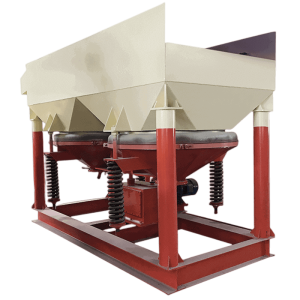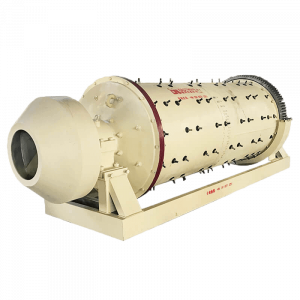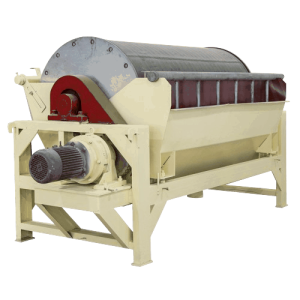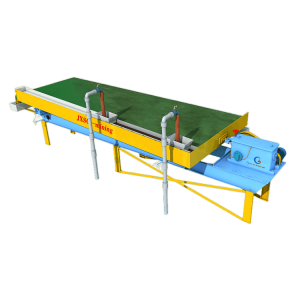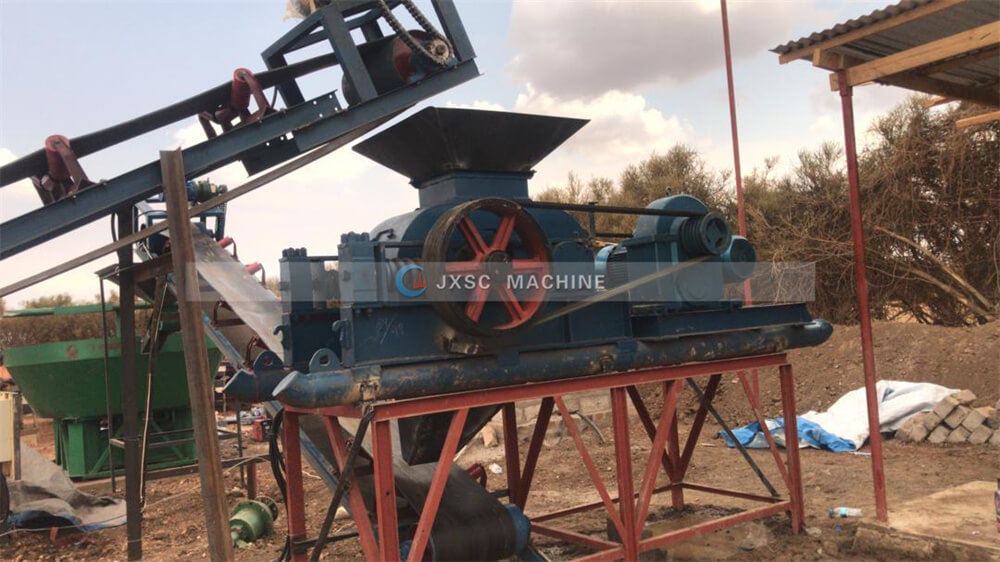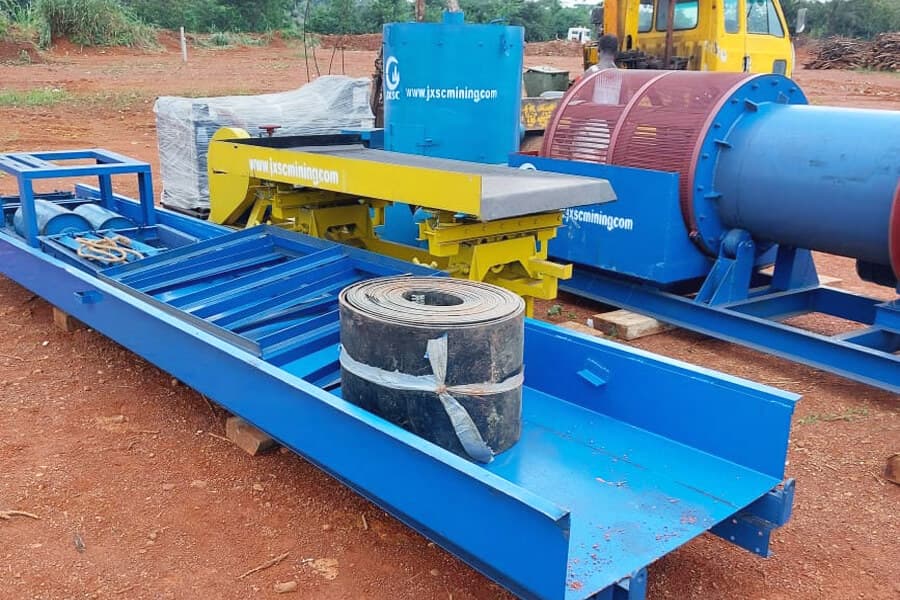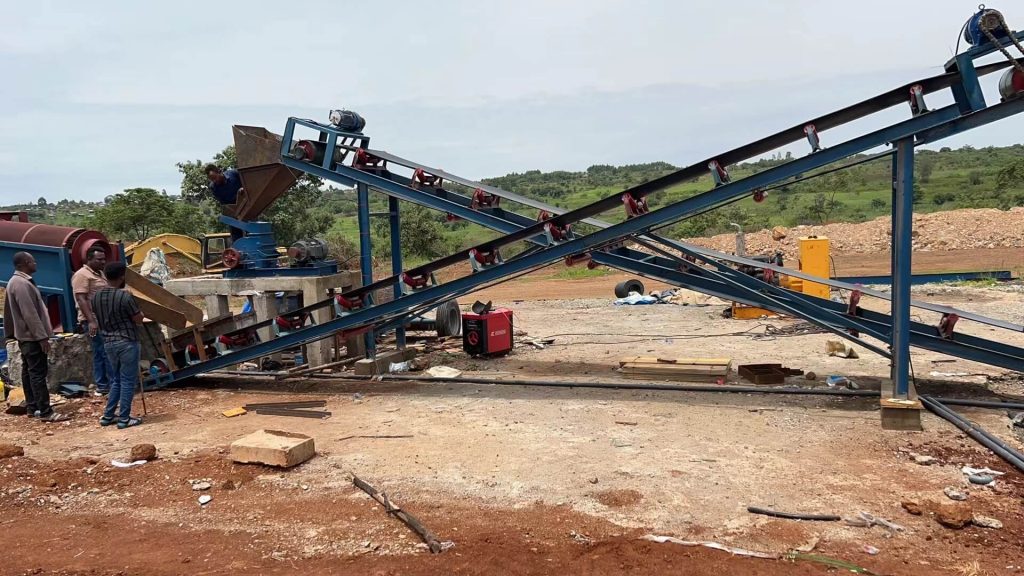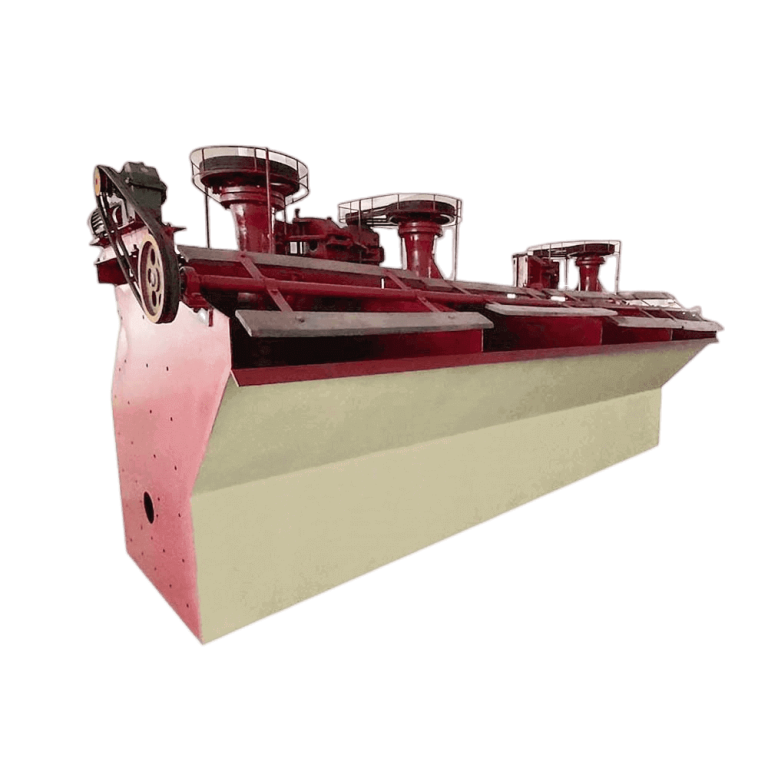
Flotation machine
Capacity: 0.1-50m³/min per cell
Application: separating copper, gold, zinc-lead, nickel, fluorite, molybdenum ore, feldspar, talc, rutile in various mineral processing plants; It can also be used for separation of ferrous metals and non-metals.
Overview
Introduction: The flotation machine is important for realizing the flotation process. It can process metal or non-metal minerals, such as copper, lead-zinc, lithium, antimony, fluorite, talc, etc. After the minerals undergo wet grinding, the minerals dissociated into monomers are adjusted into a slurry of a certain concentration. It is sent to the flotation machine after being fully mixed with flotation chemicals in the stirring tank. JXSC flotation machine has a large air suction volume and low power consumption.
Advantages Of Flotation machine
- Create a suitable environment for the dynamic collision of bubbles and particles and the static separation of bubbles and particle combinations, which is conducive to the selection of fine particles; simple operation and high degree of automation.
- It can make the pulp circulation reasonable, minimize the sedimentation of coarse sand, and have low power consumption.
- The enrichment ratio is large, the recovery rate is high, and the processing capacity is large. It is especially suitable for processing micro-grained particles and is easy to self-control and large-scale.
Working principle of flotation machine
The impeller is rotated by V-belt of motor and produces negative pressure by centrifugal function. Enough air is sucked to mix slurry, and slurry mixes drugs simultaneously. Mineral sticks on the bubble completely and floats on the surface of the slurry to form mineralized bubble. The useful bubble is scraped out by adjusting the flashboard height and controlling the liquid surface.
Types Of Flotation machines
There are three main types of JXSC flotation equipment, namely mechanical agitation flotation machine (BF, JJF type), inflatable agitation flotation machine (XCF type, KYF type) and inflatable flotation machine (XJB rod flotation machine).

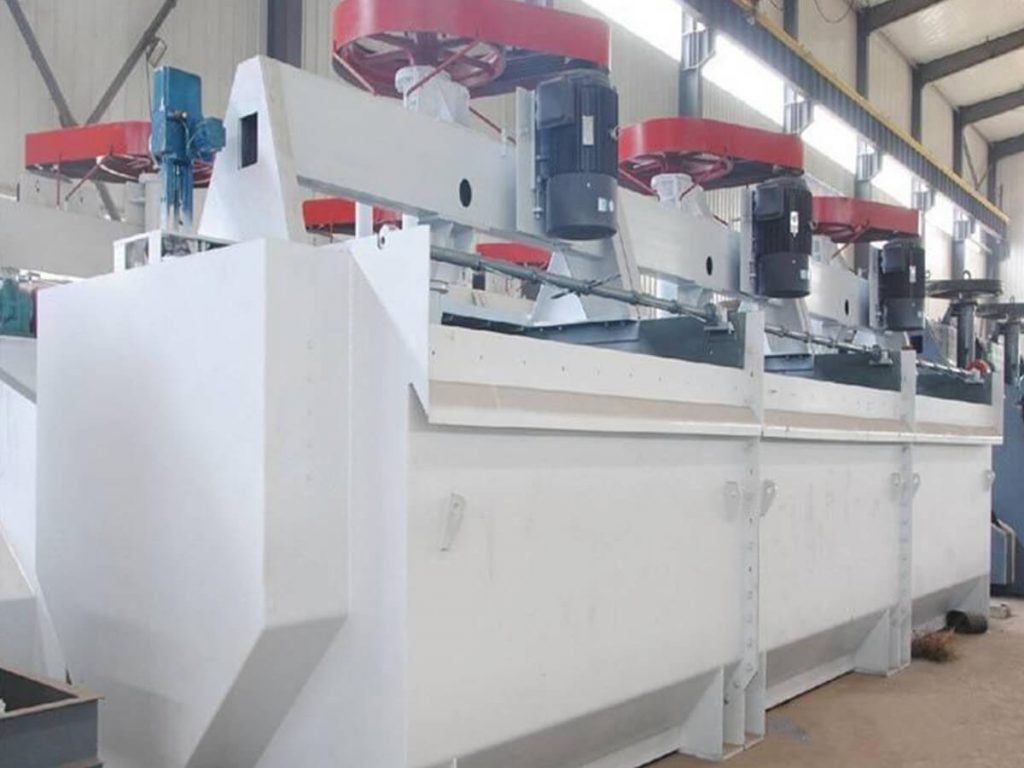
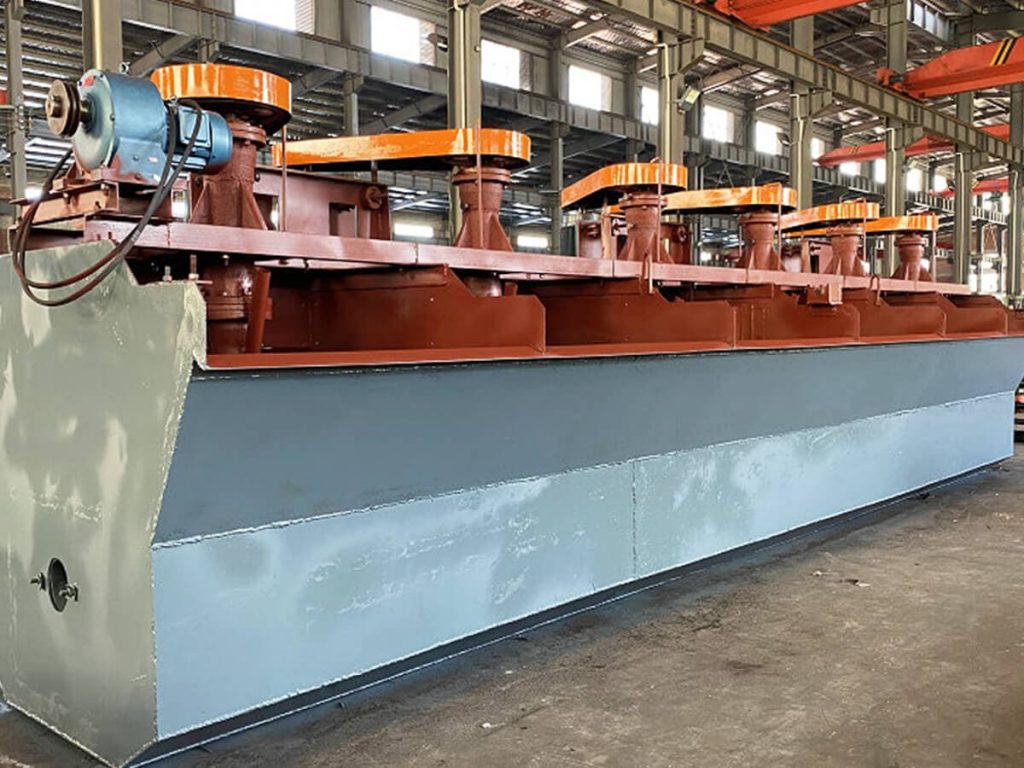
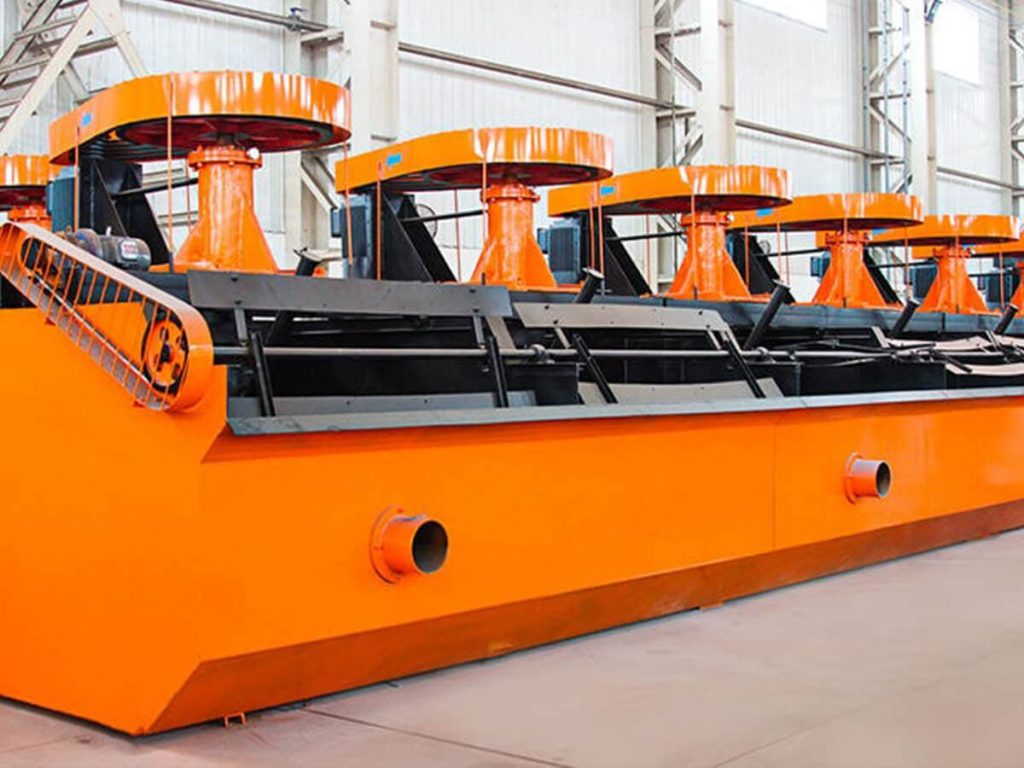
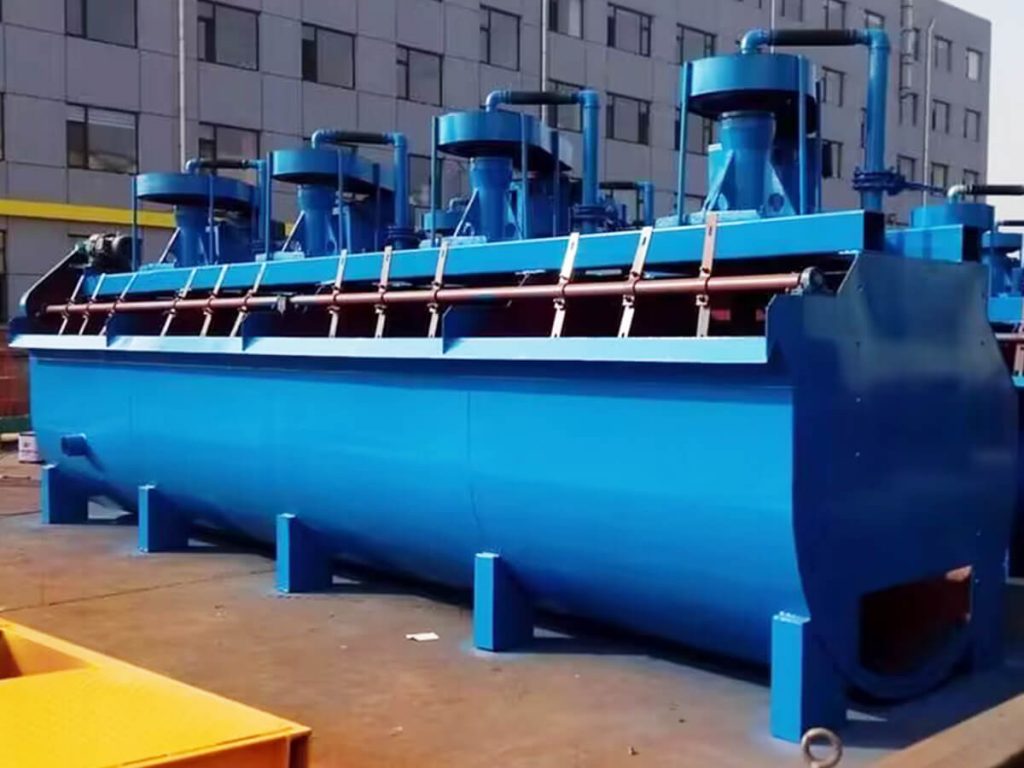
specifications
Model | Volume | Cell size | Impeller Dia. | Impeller speed | Capacity | Power | Singe cell weight |
| m3 | mm | mm | r/min | m3/min | kw | kg |
XJK-3A | 0.35 | 700×700×700 | 300 | 483 | 0.18-0.4 | 2.2/0.55 | 430 |
XJK-4A | 0.62 | 820×900×850 | 350 | 400 | 0.3-0.9 | 3/1.1 | 755 |
XJK-5A | 1.1 | 1100×1100×1000 | 500 | 330 | 0.6-1.6 | 5.5/1.1 | 1416 |
XJK-6A | 2.8 | 1750×1600×1100 | 600 | 280 | 1.5-3.5 | 11/1.1 | 2113 |
XJK-7A | 5.8 | 2200×2200×1200 | 750 | 240 | 3–7 | 22/1.5 | 3400 |
SF-0.37 | 0.37 | 700×700×750 | 296 | 386 | 0.2-0.4 | 1.5/0.55 | 468 |
SF-0.7 | 0.7 | 820×900×950 | 350 | 400 | 0.3-0.9 | 3/1.1 | 805 |
SF-1.2 | 1.2 | 1100×1100×1100 | 450 | 312 | 0.6-1.2 | 5.5/1.1 | 1373 |
SF-2.8 | 2.8 | 1700×1600×1150 | 550 | 268 | 1.5-3.5 | 11/1.5 | 2138 |
SF-4 | 4 | 1850×2050×1200 | 650 | 220 | 2–4 | 15/1.5 | 2582 |
SF-8 | 8 | 2200×2900×1400 | 760 | 191 | 4–8 | 30/1.5 | 4129 |
SF-10 | 10 | 2200×2900×1700 | 760 | 191 | 5–10 | 30/1.5 | 4486 |
SF-16 | 16 | 2850×3800×1700 | 760 | 191 | 5–16 | 30×2/1.5 | 8320 |
SF-20 | 20 | 2850×3800×2000 | 760 | 191 | 5–20 | 30×2/1.5 | 9828 |
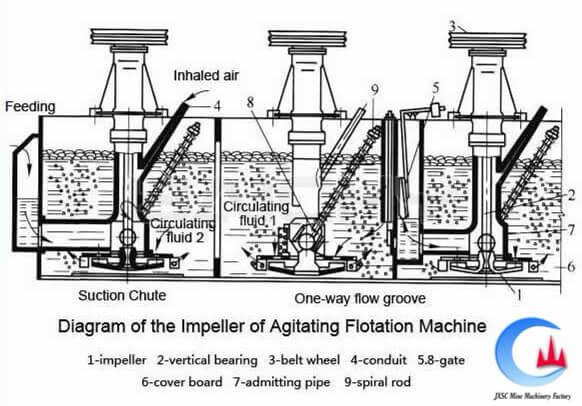
Contact Us Now
Please fill out the information below for the quotation price and engineer’s help. We will reply ASAP!
Notice:
- We do not provide jobs and have no interest in investment or partnerships.
- We provide mineral processing equipment and solutions; not buy and sell mineral /ore /materials.
- We value your privacy and keep your information safe.
